Cliff Hanger
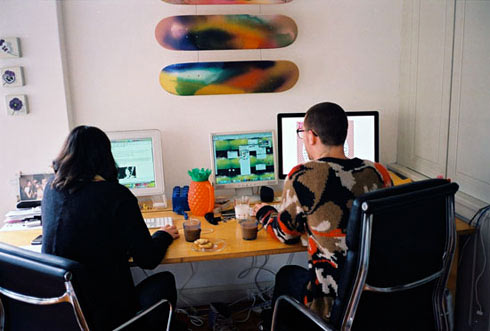
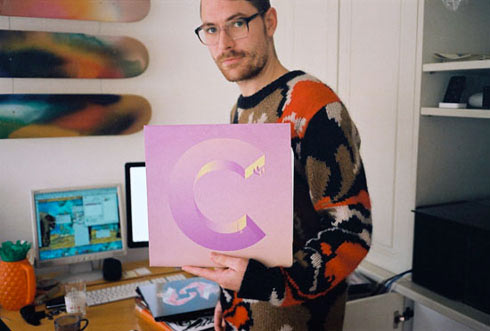
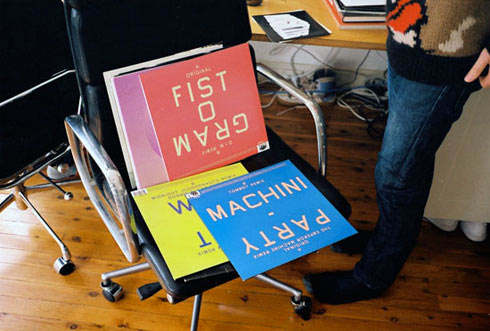
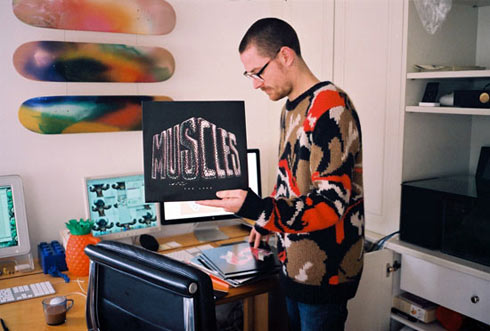
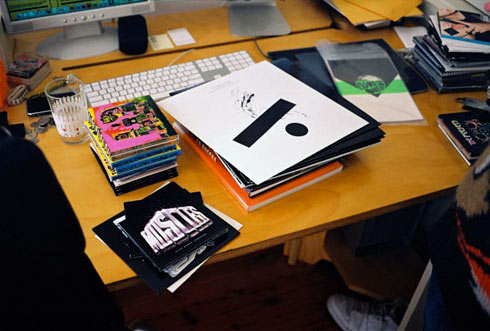
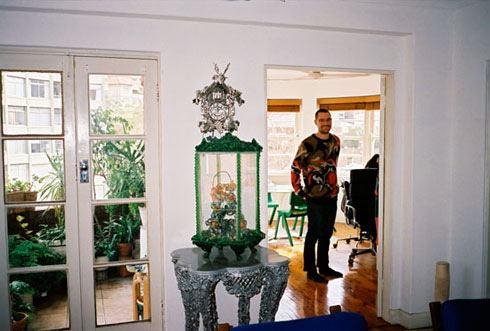 Words: & Images: Tristan Ceddia
Words: & Images: Tristan Ceddia
Jonathan Zawada would have to be of the most celebrated graphic designer/artists working in Australia right now. With an ARIA under his belt and a folio of work looking more like a back catalogue than that of one man, Tristan Ceddia caught up with him at his home for some words on design and a glass of water.
Tristan Ceddia: As a creative you bear a heavy skill set stretching from hard edge computer graphics to soft, intricate hand renderings. Do you find yourself forever exploring new ways of interpreting ideas?
Jonathan Zawada: Really I find I just get bored easily and that’s what normally prompts me to move on from one approach to another. It can get a bit dull solving the same sorts of problems, like say, designing a cover for an album, in the same way over and over again in the same way so I think switching it up keeps it interesting for me as well as helping to get me to refocus on the core of each job.
TC: Illustration clearly plays a large part in the way you work. Is drawing a skill that comes naturally or has it developed over time?
JZ: I’ve drawn for as long as I can remember, as a kid I used to love drawing fighter planes and basketball players. In high school I started drawing a lot more cartoons and gradually moved into digital illustration and 3d stuff. For a few years I stopped drawing entirely and mostly just did digital stuff or painted. Coming back to it I noticed how much better I got once I was drawing more regularly again but it’s definitely always been my most comfortable medium by far.
TC: Your personal work seems to draw parallels in cultural and popular reference often coupling opposing elements in order to express new ideas. How important are strong ideas to you?
JZ: I’ve always been a bit of a stickler for a concept behind an execution. I find it totally impossible to come up with anything from a completely blank slate, I just end up sitting there staring at the blank page thinking that it’s probably better off blank and then getting really irritated at myself for not having any ideas. I’m definitely far more interested in the ideas side of it all and in my personal work especially I probably spend just as much time, if not more, researching and developing the ideas as I do executing the work. I think that’s the thing I like about art, that it is something that can be enjoyed in layers and that a mass of ideas and thinking can be turned into something aesthetic and superficial that can be appreciated in both ways.
TC: Nature appears as a reoccurring theme and inspiring element in your work. Do you find yourself seeking out inspiration or does it come naturally (ha!)?
JZ: Nice one! For me most of the nature elements in my work represent some aspects of maths or science that connect to the whole piece. Nature seems to have already distilled almost everything you can think of into natural forms already and they often seem to me to be the most perfect summary of an idea. Its not normally something I would see and be initially inspired by though, usually I just end up there after a bit of thinking and then the inspiration from those elements kind of unfolds as I’m working with it – if that makes any sense…
TC: At a conference some time ago, you cited visual references along side your work. Currently on your website, you display references, or ‘Cliffnotes’ as they are referred to, with each project. Can you explain the role reference plays in your work?
JZ: Part of it is about identifying what visual cues can be used in aid of communication through a non verbal method – say an image of a cube has a meaning, but that meaning is only added to it through its repeated use, over many years, in a cultural environment. I think that by understanding those meanings you can then employ them, add to them or bend them to your needs when looking at a new work. For me at least, all things are infinitely more interesting when interpreted in the context of their surroundings, cultural or physical, and there is a tendency in design – rather than art – to ignore that or pretend that context doesn’t play a part.
TC: Do you believe it is important to recognise where ideas are coming from? Credit where credit is due?
JZ: Especially in the commercial arena there seems to be a sense of ownership over ideas and visuals and a lot of people seem to act as if they are creating in a kind of vacuum or a void which I never felt was entirely right. When I was younger I was always under the impression that good, original ideas just manifested themselves from the minds of geniuses but the more I’ve looked into my favourite designers, illustrators and artists over the years the more I’ve discovered that their work is just a small adjustment or a tiny idea placed on top of a stack of ideas from other people. There’s a real animosity and aggression that comes from thinking your work is unique or that you in some way ‘own’ what you have created – I think this is really at its height in graffiti/illustration culture – and I think that that sort of thinking in turn stifles you and prevents you from experimenting, exploring and expanding your horizons. For a while I used to try to keep my references a guarded secret and then I discovered that by being honest about them it forced me to move away from them and freed me up to think on my own more and be more objective about the whole process.
TC: As a man working for himself, you seem to maintain the delicate balance between working on personal projects and ‘real’ jobs as I like to refer to them. Do you find it hard to pull away from ‘real’ work to pursue your passions? Or is it the other way around?
JZ: It’s definitely a lot harder for me to find the time and prioritize my personal work over my real work, particularly when being self employed means never knowing when the next pay day will be. It’s pretty much impossible to work both things at the same time and I found I really need to delineate between the two quite strictly through my time allocation. Basically that means I need to work enough to buy my own time for 2 or 3 weeks so that I can totally stop real work, change my head a bit and focus on personal stuff for a while.
TC: Most personal projects for me derive from either dissatisfaction with ‘real’ jobs or a desire to create something new. You make silk scarfs and mineral jewels under the umbrella Trust Fun with your wife Annie Wright and fellow designer Shane Sakkeus. Where does Trust Fun emerge from?
JZ: Trust Fun totally comes from that sort of dissatisfaction you described. There are so many restrictions you get on real jobs and so many instances where I’ve felt like great opportunities were being missed by clients that sometimes you just need to do it yourself. It kind of sits somewhere between personal and professional work, it’s the part of me that enjoys my job as a designer (as opposed to artist) and is a sort of manifestation of what that role feels like it should be.
TC: How do you find the collaborative environment compared to working on your own? Do the two ever cross over?
JZ: Sometimes I find it refreshing and its nice to take the pressure off occasionally and work with other people on things but for me thats really more about diminishing my own scope and allowing me to focus more on a particular detail rather than the whole. I’ve worked on projects with the Ksubi art department, director Kris Moyes and obviously my Trust Fun work with Shane Sakkeus that have all been really successful things that I’m really proud of and in some cases the work that I would consider to be my best, but the process doesn’t come all that naturally to me. I’m really not the best collaborator most of the times and I’ve gotten so used to working by myself over the years that I now find it almost totally impossible to work in a space with other people around.
TC: So where to next? What’s on the horizon in the mysterious world of Jonathan Zawada?
JZ: At the moment I’m focusing on getting through the economic downturn without having to sell our apartment! I’ve been working on a bunch of new personal work that is all still in the research stage but is a bit of a departure from previous stuff and really I’m just waiting to be able to build up a bit of a cash supply to allow me to stop work for a few weeks to develop it. Trust Fun have just finished off our range of digital scarves which are all getting sent out to stores as we speak which is exciting to finally see come to fruition. We’ve also been working with Pop Magazine in London on a bunch of stuff, mostly online, which will be happening over the next six months or so. My real aim at the moment is just to keep paying the bills and maybe to move out of the city and into the country!
See more from Jonathan here and Trust Fun here
Jonathan’s latest publication through Izrock Pressings Unexpected Token Float is sold out online, but is still available at the Curated Temporary Bookstore
Next Article



